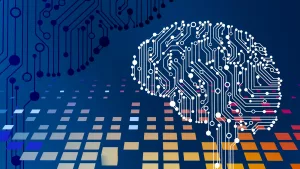Technology has the power to revolutionize accessibility for individuals with disabilities by offering innovative solutions that cater to their diverse needs. One way technology can improve accessibility is through the development of assistive devices and software specifically designed to enhance communication, mobility, and independence for those with disabilities. Furthermore, advancements in artificial intelligence and machine learning have paved the way for more sophisticated technologies such as voice recognition software, smart home devices, and wearable technology that can greatly benefit individuals with disabilities in their daily lives.
Enhanced Communication
For individuals with speech or hearing impairments, technology has facilitated communication through text-to-speech applications, video relay services, and communication boards that enable them to interact effectively with others. These tools not only enhance communication but also promote social inclusion and participation in various settings.
Text-to-Speech and Speech Recognition
Text-to-speech (TTS) technology converts written text into spoken words, which is invaluable for individuals with visual impairments or dyslexia. Applications like Apple’s VoiceOver and Microsoft’s Narrator provide users with the ability to navigate and consume digital content audibly. For example, a visually impaired student can use TTS to listen to lecture notes or e-books, enhancing their learning experience.
Speech recognition technology, on the other hand, allows individuals with mobility impairments to control devices and input text using their voice. Software such as Dragon NaturallySpeaking is a popular choice for its accuracy and ease of use. Imagine a professional with limited hand mobility using voice commands to draft emails and create documents, increasing productivity without the need for physical input.
Video Relay Services
Video relay services (VRS) facilitate communication for individuals who are deaf or hard of hearing by allowing them to communicate with hearing individuals through a sign language interpreter via video calls. This service is crucial for both personal and professional interactions, ensuring that communication barriers are minimized. Services like Sorenson VRS and Purple VRS are widely used in the United States and have been lifesavers for many, providing seamless communication in scenarios ranging from job interviews to medical consultations.
Improved Mobility
Technological innovations like smart wheelchairs, exoskeletons, and navigation apps have empowered individuals with mobility impairments to navigate their environment with greater ease and independence, enhancing their overall quality of life. These advancements not only improve physical mobility but also promote autonomy and facilitate greater participation in everyday activities.
Smart Wheelchairs
Smart wheelchairs are equipped with sensors and GPS technology that aid in navigation and obstacle avoidance. They can be controlled using a joystick, touchpad, or even through voice commands. For example, the Whill Model Ci is a revolutionary smart wheelchair that offers users the ability to travel over various terrains with ease, and its compact design allows for indoor maneuverability. Users have shared stories of how smart wheelchairs have enabled them to travel independently to places that were once challenging to access, such as parks and museums.
Exoskeletons
Exoskeletons are wearable robotic suits that assist individuals with lower limb disabilities in walking. Companies like ReWalk and Ekso Bionics have developed exoskeletons that are being used in rehabilitation settings and are increasingly becoming available for personal use. These devices can significantly enhance mobility and independence for users, allowing them to stand and walk, which can also have additional health benefits such as improved circulation and muscle tone. For instance, veterans with spinal cord injuries have reported regaining the ability to walk with the help of exoskeletons, a development that not only aids mobility but also boosts mental health and self-esteem.
Navigation Apps
Navigation apps specifically designed for individuals with disabilities, such as Wheelmap and AccessMap, provide information about accessible routes and venues. These apps help users plan their journeys by taking into account the accessibility features of public transport, sidewalks, and buildings, thereby facilitating more independent travel. A practical example is a city dweller using AccessMap to navigate a new neighborhood, confidently knowing which routes are wheelchair-accessible and which public facilities are equipped for their needs.
Accessible Digital Content
Web accessibility features such as screen readers, voice commands, and captioning tools have made digital content more inclusive and accessible to individuals with visual or cognitive impairments, ensuring equal access to information and services online. These tools not only provide access to information but also empower individuals to engage in online activities, education, and employment opportunities.
Screen Readers
Screen readers are essential tools for individuals who are blind or have severe visual impairments. They read aloud the text displayed on a computer screen and are compatible with most operating systems. Popular screen readers include JAWS (Job Access With Speech) for Windows and NVDA (NonVisual Desktop Access), an open-source alternative. Many students and professionals rely on screen readers to perform daily tasks, from browsing the web to writing reports, enabling them to participate fully in digital spaces.
Captioning Tools
Captioning tools have become indispensable for making videos accessible to individuals with hearing impairments. Platforms like YouTube and Zoom offer automatic captioning features, although manual editing is often required for accuracy. Services like Rev and Otter.ai provide transcription services that can be used to generate captions for a variety of media. For educators, ensuring that video lectures have accurate captions can make a significant difference in the learning experience of students with hearing impairments.
Challenges and Opportunities
While technology has made significant strides in enhancing accessibility for individuals with disabilities, challenges such as affordability, compatibility, and user experience remain.
Affordability
The cost of assistive technology can be prohibitive for many individuals with disabilities. While some devices and software are covered by insurance or government programs, others are not, posing a barrier to access. Initiatives to reduce costs, such as open-source software and community-driven projects, are crucial in making technology more accessible. For example, the open-source screen reader NVDA provides a powerful alternative to costly commercial options, allowing individuals and organizations with limited budgets to gain access to essential tools.
Compatibility
Ensuring compatibility between various assistive devices and mainstream technology is another challenge. Developers must prioritize creating products that integrate seamlessly with existing systems and software, allowing users to benefit fully from their assistive devices. A practical approach is to adhere to universal design principles, which ensure that products are usable by the widest range of people, regardless of their abilities or the technologies they use.
User Experience
User experience is paramount when designing technology for individuals with disabilities. Products must be intuitive, reliable, and easy to use. Feedback from the disability community is invaluable in the design process, and inclusive user testing can help developers create products that truly meet the needs of their users. For instance, involving users with disabilities in the beta testing phase of a new app can reveal usability issues that might not be apparent to developers without lived experience of disability.
Future Directions
With continued research and collaboration between technology developers and disability advocates, the potential for technological advancements to further improve accessibility for individuals with disabilities is vast. By addressing these challenges and leveraging opportunities for innovation, technology can continue to break barriers and create a more inclusive and accessible world for all individuals, regardless of their abilities.
Artificial Intelligence and Machine Learning
The integration of artificial intelligence (AI) and machine learning into assistive technology holds great promise for the future. AI can enhance the functionality of existing devices, making them more responsive and adaptable to users’ needs. For instance, AI-driven predictive text and autocorrect features can improve communication for individuals with motor impairments. Imagine a future where communication devices can learn and adapt to a user’s speech patterns and preferences, offering personalized suggestions that enhance interaction efficiency and ease.
Internet of Things (IoT) and Smart Home Technology
The Internet of Things (IoT) and smart home technology offer exciting possibilities for enhancing independence for individuals with disabilities. Devices like smart lights, thermostats, and security systems can be controlled remotely or through voice commands, allowing users to manage their home environment with ease. Consider a person with limited mobility using a smartphone app to adjust their home’s lighting and temperature, ensuring comfort and safety without needing to move from their current position.
Virtual and Augmented Reality
Virtual and augmented reality (VR and AR) have the potential to transform accessibility in education and employment. VR can create immersive learning experiences for students with disabilities, while AR can provide real-time assistance in the workplace, such as overlaying instructions or highlighting important information in a user’s field of view. For instance, virtual reality simulations can help individuals with social anxiety or autism practice social interactions in a controlled environment, building confidence and social skills.
Wearable Technology
Wearable technology, such as smart glasses and fitness trackers, can enhance accessibility by providing real-time data and assistance. Smart glasses equipped with cameras and AI can assist visually impaired users by reading text, recognizing faces, and identifying objects. Fitness trackers can monitor health metrics and provide reminders for medication or exercise, supporting individuals in maintaining their health and well-being. For example, a person with a cognitive impairment might use a smartwatch to receive gentle reminders throughout the day, promoting independence and routine adherence.
Community and Collaboration
Creating a truly inclusive technological landscape requires collaboration between developers, disability advocates, and end-users. Community engagement is crucial in understanding the diverse needs of individuals with disabilities and ensuring that technology is developed with empathy and insight. Initiatives like hackathons focused on accessibility challenge developers to create solutions that address real-world problems faced by people with disabilities.
Inclusive Design Practices
Inclusive design goes beyond compliance with accessibility standards; it involves designing products and services that are inherently accessible to all users. This approach encourages creativity and innovation, leading to solutions that benefit a wider audience. For instance, designing a mobile app with large, high-contrast buttons not only aids users with visual impairments but also enhances usability for all users in low-light conditions or when multitasking.
Policy and Advocacy
Advocacy plays a critical role in advancing accessibility in technology. Policies that mandate accessibility standards, such as the Americans with Disabilities Act (ADA) and the Web Content Accessibility Guidelines (WCAG), provide a framework for ensuring that technology is accessible to all. Continued advocacy is needed to update these standards and address emerging technologies, ensuring that they remain relevant and effective in a rapidly changing landscape.
In a world where technology continues to evolve rapidly, the possibilities for improving accessibility through innovation are endless. As we move forward, it is crucial that the voices of individuals with disabilities are heard and that they play a central role in shaping the technological landscape. By doing so, we can ensure that technology not only meets the needs of those it aims to assist but also empowers them to lead more independent, fulfilling lives. The journey toward a more accessible future is ongoing, and with each technological breakthrough, we move closer to a world where everyone can participate fully and equally in all aspects of life.



